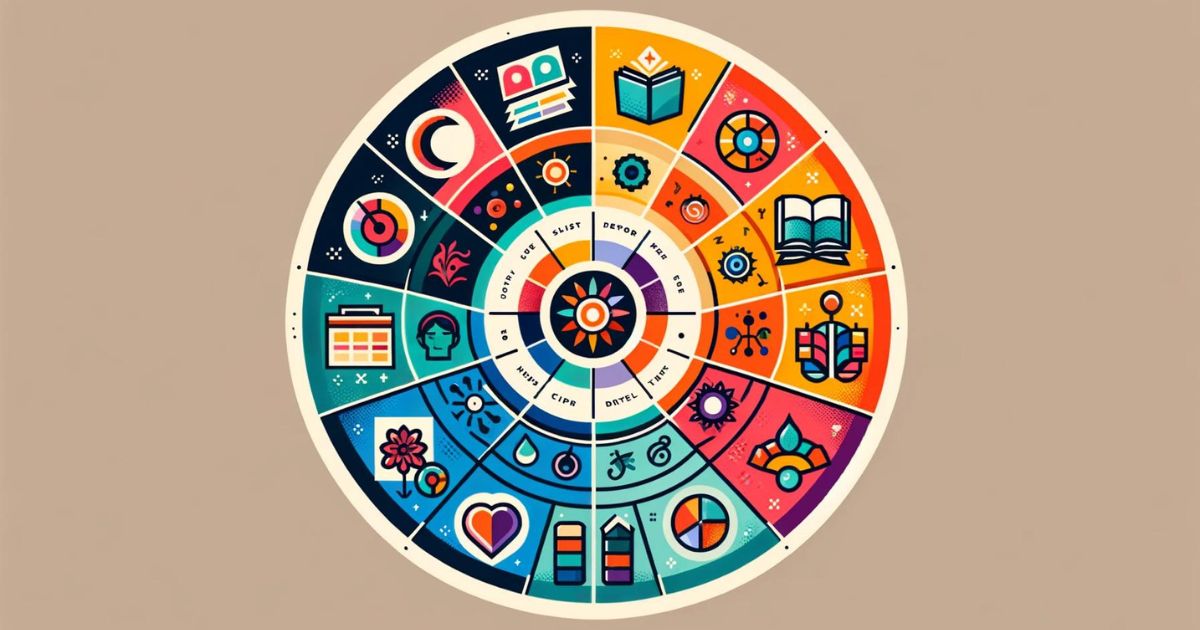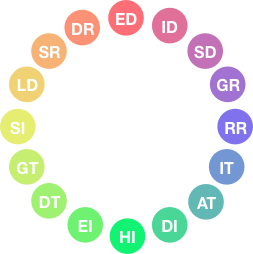How the iPersonic Compatibility Color Coding System works
31/03/09 by Felicitas Heyne | Filed in: Personality

Today a few words about our Compatibility Color Coding System and the principle behind it. You may have already asked yourself: "Why do they claim that similar colors stand for certain personality types that are a good match and what is this all about?"

Discover Your Ideal Career Path!
Uncover the careers that align perfectly with your personality with our iPersonic Career Test. It’s quick, insightful, and tailored specifically to help you navigate your career options based on your unique traits.
Take the Test Now!
But then almost everybody knows those couples – friends or lovers, where one can only shake one’s head in amazement and ask oneself, what in the world is holding those two who are so obviously like fire and water, together. Maybe we have even met someone ourselves who irresistibly attracts and fascinates us, even though in certain aspects he/she is our exact opposite. Here the psychologist stands ready with his attempts at explaining it, as well. Some theories are based on the fact that choosing the opposite provides for a partner who acts out those character traits that are less pronounced in oneself by proxy, so to speak. For instance, if I am very conscientious while my partner is rather more easy going – and if I let it - it may automatically bring a little more relaxation into my life, as well. Other theories are that opposite partners satisfy certain needs akin to the key and lock, in each other. Extreme examples would be the sadist (who is dominant and likes to make others suffer) and the masochist (who is rather more submissive and enjoys suffering).
As you know our type testing covers four different psychological preferences each of it in contradistinctive dimensions. If you take a closer look at the color circle you’ll realize that the types are arranged according to a very specific principle accounting for these dimensions. First of all, next to the own personality type there will often (not always) be types of the same primary category on the left and/or right. For instance, Idealists are located on both sides of the Harmony-seeking Idealist, as well. Secondly, in the upper half of the circle the colors have a more or less high red percentage. (The Energetic Doer has the highest). This percentage symbolizes the “sensing” preference (consequently all sensing types are to be found here). The bottom half, on the other hand has a more or less high degree percentage of green standing for intuition (these types are rather more intuitively guided). If one now imagines a very slightly oblique diagonal across the color circle running between “ED” and “ID” on the top and between “EI” and “HI” on the bottom it divides the circle into two halves: On the left the colors contain a more or less high percentage of yellow – this color symbolizes the preference of extraversion. On the right are many colors with a more or less high blue percentage signaling intraversion.
Therefore, it is easy to understand that both the order of our personality types and the extrapolating of the personalities that suit one another follow the first of the two principles of attraction: Birds of a feather flock together. Personality types that correspond in as many preferences as possible are always in spatial proximity to the own type. This has a good reason. The great preponderance of studies dealing with the subject of relationships make a very clear statement: For a short time, opposites can be very invigorating and interesting and therefore a flirt or an affair between two totally different people can be a truly effervescent experience. However, evolution biologists, psychologists and sociologists have agreed that relationships between people on a similar wavelength work better and therefore last longer in the long term. A group of researchers conducting a study on this subject at Pennsylvania State University last spring has coined the term “I-Sharing” representing one of the possible causes for it. This means that we are epically comfortable in the company of people who experience, think, appreciate and react as we do. We “share” our I with them, so to speak – we laugh about the same jokes, have similar ideas and get upset for the same reasons about the same things. According to this study this “shared worldview” proved to be more deciding for sympathy and antipathy than other normally connective distinguishing marks (for instance same origin and level of education).
In short: We like and are comfortable with people who communicate on our wavelength and who are similar to us in important aspects. That is the principle by which the personalities are arranged in the color circle and by which you can quickly orient yourself with one glance when you are searching for a new relationship. Of course, what applies to the personality tests in general, applies here as well: Exceptions prove the rule! There are surely cases where for instance a Good-natured Realist and a Groundbreaking Thinker have a wonderful, invigorating and exciting relationship with each other. In that case one can assume that they have worked hard on it. At least from the scientific point of view similarly baked personalities have it easier with each other. However, that should not keep you from having fun with opposite personality types! Even if it should not segue into eternal love, with their help you can surely bring a little new color into your life! And there is nothing wrong with that!
This article was written by psychologist and book author Felicitas Heyne. She is the developer of the iPersonic personality test. Take the free personality test now and get in-depth career advice and life coaching from our unique iPersonic personality profiles!
Similar articles in this blog:- Discover your Strengths
- Intuition – Knowledge on a Gut-Level
- Self-Confidence, Part 1 – learning to trust yourself
- Self Confidence, Part 2 - dealing with negative thoughts
- Self Confidence, Part 3 - The Benevolent Inner Observer
- Self Confidence, Part 4 - Analyzing your self-image
- How to find a job that makes you happy
- First impressions in a job interview: why they really matter